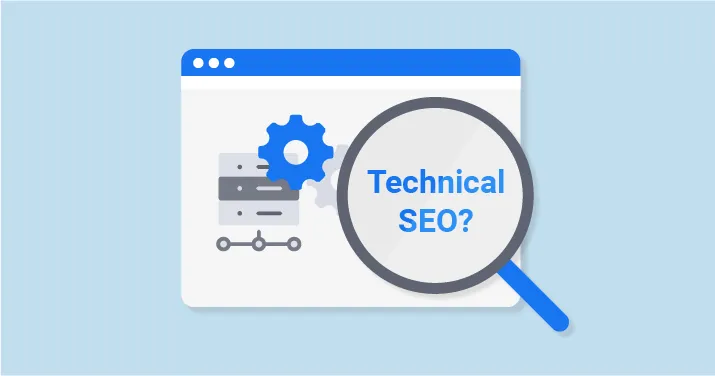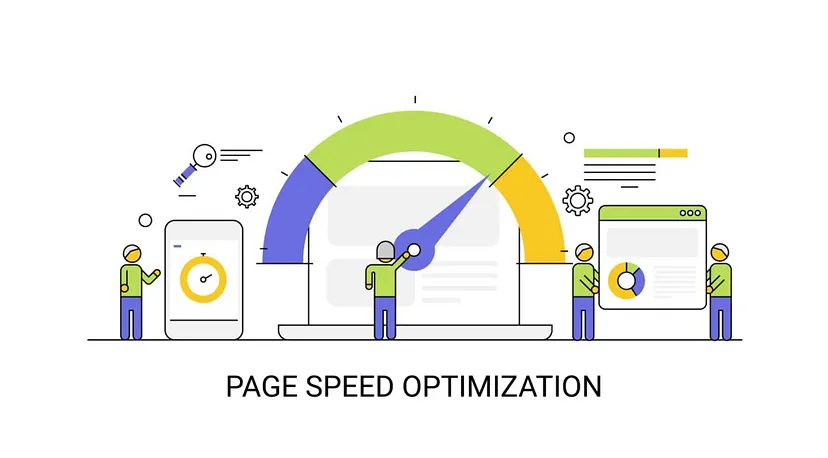I can understand why you are here and what you have searched for and come here!
When you just search “SEO” on YouTube and any other platform you will find many courses on how to do SEO with tons of information. But the reality is that everyone prepares you with different things. And it confuses you.
In fact, in my opinion, they make SEO more difficult and hard for newcomers. meanwhile, SEO is a sequential process, just like programming. However, SEO is not a one-time “time investment,” whereas programming is.
In today’s digital age, search engine optimization (SEO) plays a vital role in driving organic traffic to websites. By optimizing your website for search engines, you can improve its visibility, reach a broader audience, and increase your chances of success online.
So I decided to end this problem for students and many learners and sum up all the step-by-step SEO processes in one article. In this comprehensive guide, I will take you through a step-by-step process to implement effective SEO strategies for your website.
Therefore, if you want to improve your Google ranks, this guide is for you.
What Is an SEO Strategy?
The process of organizing and carrying out actions intended to raise organic search engine ranks is known as an SEO strategy (sometimes referred to as a “SEO approach”).
In other words, an SEO strategy is the procedure you use to increase organic traffic to your website. Simple 🙂
Here are the stages of creating an SEO strategy in 2023
● Keyword Research
[Create a List of Keywords, Analyze Google’s First Page]
● Create a Content
[Create high-quality content, Focusing on Content Design]
● On-Page SEO Optimization
[Internal Linking, Semantic SEO, Short Rich URLs Structure, Meta Tags, Heading Tags, Image and Video Optimization,]
● Optimize For Search Intent
[Research and analyze keywords, Create relevant and comprehensive content, Research and analyze keywords]
● Technical SEO
[Mobile Optimization, Page Speed Optimization, User Experience]
● Off-Page Optimization/ Link Building Strategies
[Broken link strategy, Guest posting strategy, Social Media Marketing]
● Improve and Update Your Content
[ Keyword Research ]
1. Create a List of Keywords
The foundation of SEO begins with thorough “keyword research”. You can use keyword research tools like Google Keyword Planner, SEMrush, or Moz Keyword Explorer to find popular and valuable keywords with reasonable search volumes.
But the best way to find keywords that your target customers search for? Definitely using Google Suggest.
Google’s search box will display a selection of suggestions as soon as you start typing a keyword:
Because they originate directly from Google, these frequently make excellent SEO keywords.
(This means, you are aware that people are looking for them.)
[Tip! Target long-tail keywords to attract more specific and qualified traffic]
After gathering all the keywords related to your niche, create an Excel sheet and save all the keywords in it.
2. Analyze Google’s First Page
Okay, so you discovered all your main business keywords. now Check who currently ranks for those keywords right now.
To do that Simply enter one of the terms you discovered into the Google search bar.
Scan the first top 10 results:
And make note of any trends you find.
For example, the SERPs for “Strawberry cheesecake” is full of recipes or blogs. Therefore, if you wished to write about that topic on your website, you should be aware that list posts cover the majority of the first page results. And you should likely write a list post for your site.
Note: There’s a lot more to Keyword research but I’m not covering everything about keyword research in one post. because this post is solely about the STEPS of search engine optimization.
[ Content is The King ]
When it comes to establishing a strong online presence, content acts as the bedrock upon which success is built. It serves as the vehicle for conveying information, engaging audiences, and shaping brand identity. Whether it’s a well-crafted article, an entertaining video, or a thought-provoking podcast, compelling content has the power to captivate, inform, and inspire.
1. High-quality Content
When it comes to SEO content, you’ve got two options, either you can create something different or you can create something better. There are moments when you desire to build something greater and better than what already exists.
But sometimes you’re better off with content that’s completely different.
It depends on what helps your content stand out.
Take a long time to write your content and put your relevant keywords in your content and optimize it in a good way.
2. Focusing on Content Design
The most underrated aspect of content marketing may be the design. The best content ever created is yours to use.
However, if it resembles this…
Usually, it won’t get much traction.
Because of this, you have to invest a large portion of my marketing budget in content design.
A good website interface should be visually appealing, clean, and well-organized.
On-Page Optimization
On-page SEO is the process of editing a single web page to raise its search engine visibility and increase organic traffic. In order to make a website more relevant and user-friendly for both search engines and human users, it entails optimizing numerous aspects of the page. The following are some components of on-page optimization:
- Title Tags: Create unique and descriptive titles for each web page, incorporating relevant keywords to help search engines understand the page’s content.
- Meta Descriptions: Write compelling meta descriptions that summarize the page’s content and encourage users to click through from search engine results pages.
- Heading Tags: Use heading tags (H1, H2, H3, etc.) to structure your content and highlight important sections. Include relevant keywords in your headings to provide clarity and context to search engines.
- Short and rich URL: Create clean and readable URLs that incorporate relevant keywords and accurately reflect the content hierarchy of the page.
- Outbound Links: Including relevant outbound links to reputable and authoritative websites can help search engines understand the topic of your content and establish credibility.
- InterLinking: Internal links are clickable references to web pages within the same domain. These don't lead to pages on other domains as external links do.
- Image and Video Optimization: Optimizing images and videos by using descriptive file names and alt tags, and compressing their size to improve page load times.
[ Optimize For Search Intent ]
You must comprehend the user’s overarching objective when they search for a certain keyword or phrase in order to optimize content for search intent. The following actions will assist you in optimizing for search intent:
- Research and analyze keywords: Start by researching keywords relevant to your content. Look for keywords that align with the search intent you want to target. Use tools like Google Keyword Planner, SEMrush, or Moz to find popular and relevant keywords.
- Understand search intent: Analyze the search results for your target keywords to understand the search intent behind them. Are the top-ranking pages informational, transactional, navigational, or a combination? Look for patterns and identify the user’s primary intent when searching for those keywords.
- Create relevant and comprehensive content: Once you understand the search intent, create content that directly addresses it. For informational queries, provide detailed and well-structured information. For transactional queries, focus on showcasing products or services. For navigational queries, make it easy for users to find what they’re looking for on your website.
[ Technical SEO ]
Technical SEO is the practice of optimizing a website’s technical components in order to enhance its performance and visibility in search engines. It involves a number of techniques that improve user experience, page performance, and mobile optimization. Let’s examine each of these subjects in more detail:
1. Mobile Optimization
Making sure a website is optimized for mobile devices, such as smartphones and tablets, is the main goal of mobile optimization. Search engines give websites that are mobile-friendly a higher priority due to the growing use of mobile devices for internet browsing. Among the crucial elements of mobile optimization are:
- Responsive Design: Creating a website that adapts to different screen sizes and resolutions.
- Mobile-Friendly Layout: Ensuring that the website’s layout, navigation, and content are easily accessible and usable on mobile devices.
- Accelerated Mobile Pages (AMP): Implementing AMP, a framework that optimizes page loading speed on mobile devices.
Page Speed Optimization
Page speed describes how quickly a web page loads in a browser. Both the user experience and search engine rankings depend on it. Low search engine visibility and high bounce rates might result from slow-loading pages. Important elements for improving page performance include:
- Minimizing Server Response Time: Reducing the time it takes for the server to respond to a request.
- Browser Caching: Enabling caching to store certain elements of the website locally on users’ devices, allowing for faster subsequent page loads.
- Minifying and Compressing Files: Removing unnecessary characters and whitespace from code files and compressing them to reduce file size.
User Experience
The term “user experience” describes the entire impression that site visitors receive after using it. It is essential for retaining visitors, lowering bounce rates, and raising conversion rates. Important elements of UX optimization include:
- Readability and Content Structure: Ensuring content is well-structured, easily readable, and properly formatted.
- Mobile-Friendly Experience: Providing a seamless and user-friendly experience across different devices.
- Clear Call-to-Actions: Placing prominent and compelling calls-to-action to guide users and encourage desired actions.
Implementing these technical SEO practices can help improve a website’s performance in search engine rankings, enhance user experience, and increase organic traffic and conversions.
[ Link Building Strategies / Off-page SEO ]
Off-page SEO is the term for optimization procedures used to raise a website’s search engine ranks and broaden its online visibility. Off-page SEO entails creating external signals and developing the website’s authority and reputation, in contrast, to on-page SEO, which focuses on improving the website itself.
Acquiring high-quality backlinks from other websites to your own is the process of link building. Search engines interpret backlinks as endorsements of your website’s reliability and value. Common techniques for link-building include
1. Guest posting
What is Guest Posting?
In Simple, Guest blogging, several times known as “guest posting,” is the process of creating content for another company’s website. In order to: Drive traffic back to their website, guest bloggers typically contribute to blogs in their field that are similar to their own. It is one of the best Link building strategies.
2. Social Media Marketing
What is meant by SMM?
Social media marketing (SMM) refers to the use of websites and social media platforms to advertise a good or service. Social media marketing is growing in popularity among both practitioners and researchers, despite the fact that e-marketing and digital marketing concepts remain predominant in academia.
2. Social Media Marketing
What is meant by SMM?
Social media marketing (SMM) refers to the use of websites and social media platforms to advertise a good or service. Social media marketing is growing in popularity among both practitioners and researchers, despite the fact that e-marketing and digital marketing concepts remain predominant in academia.
[ Improve and Update Your Content ]
There is nothing wrong with updating and posting your old blogs, you can do it but in a good way, just update the information that is not working now and add something new to your old blog. Try to include unique information. Text, picture, video, screenshots anything. It will boost your blog from Earth to the Moon 🌝
This technique will save you time and energy and give you a higher chance of ranking on the first page of Google.





















 SEO
SEO






0 Σχόλια